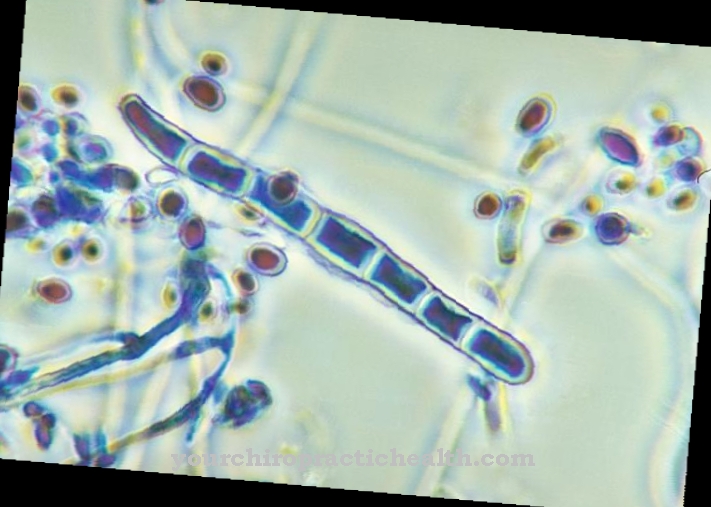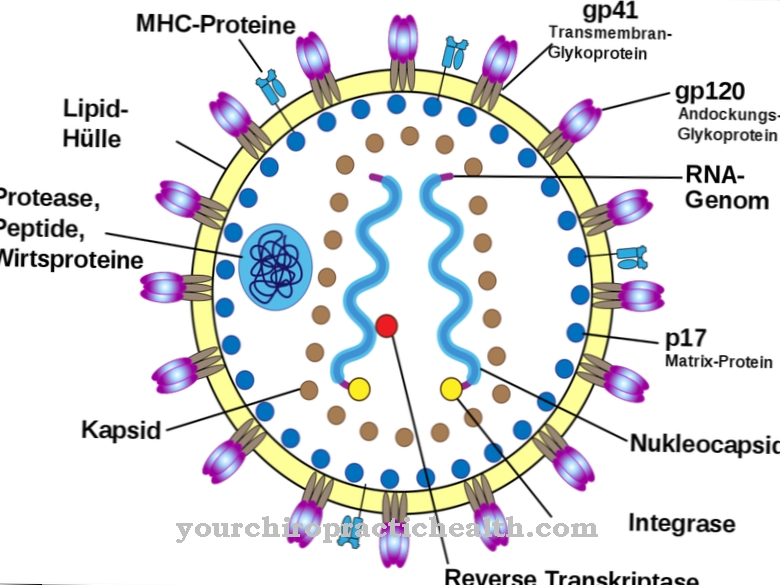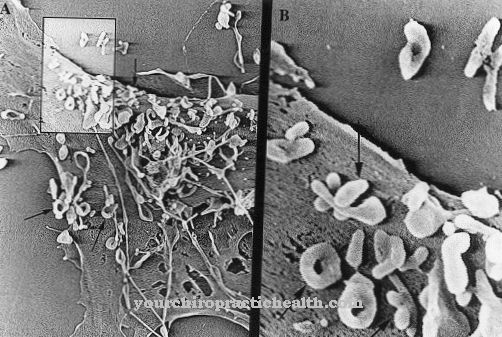Ascomycota is another name for Ashesthat appear in very different forms. They can be found in almost all habitats and their spectrum ranges from very useful (for the production of food such as bread, beer, wine, etc.) to valuable and tasty edible mushrooms (such as truffles and morels) to causing serious infectious diseases, for example by Candida or Aspergillus species.
What are Ascomycota?
Ascomycota (ascomycota) form one of the large divisions of the mushrooms with more than 20,000 species. They owe their name to their tubular reproductive organs, the asci, in which, in the case of sexual reproduction, the reduction division of the haploid ascospores takes place.
Most of the Ascomycota are characterized by their cell filaments, which measure an average of five micrometers and are known as hyphae. They are usually multicellular, branch out and together form a network, the mycelium.
The individual cells of the hyphae have cell walls that mostly consist of chitin and beta-glucans. Even within a hypha, the individual cells are separated by cell walls, so that if a hypha is injured, only the cytoplasm of this one cell can escape and the rest of the hypha including its cytoplasm is preserved. However, there are also unicellular Ascomycota that do not form hyphae, as with some yeasts.
In the course of sexual reproduction, some sac fungi form underground or above-ground fruiting bodies, some of which are very popular and very expensive as edible mushrooms. These include truffles and some types of morel.
Molds (Aspergillus) also belong to the Ascomycota. Many Ascomycota have the ability to capture algae or cyanobacteria capable of photosynthesis and form a symbiosis with them. These are so-called lichens, which were probably the first land dwellers on earth to create the conditions for the development of plants and animals by decomposing rocks and using photosynthesis. Ashes are also important because they form a symbiotic connection with their hyphae, called mycorrhiza, with the hair roots of trees and almost all other plants.
Occurrence, Distribution & Properties
Ascomycota are found in almost all land-based habitats. Except for yeast cells, tubular fungus species are mostly haploid, i.e. only have a simple set of chromosomes. Reproduction takes place largely through asexual spore formation, which develop in specialized cells called conidia. Some species also have a sexual development with the formation of ascospores in tube-like structures, the asci.
Ascomycota occur mostly as saprophytes, as recyclers and decomposers of residual biomass. Some species can also be referred to as “carnivorous” because their hyphae can capture, kill and digest amoebas, rotifers, tardigrades, roundworms and other organisms, for example.
Some species, which normally occur ubiquitously in the soil, also appear as kerosene or diesel fungi. They can spread through aircraft or diesel vehicle tanks and cause clogging or other damage to fuel lines.
Various physiological properties of certain types of tubular fungus are used, for example, for the production of antibiotics or for the gentlest possible immunosuppression to suppress rejection reactions. The pathogenic properties of some Ascomycota, which can lead to pneumonia and fungal infections of the skin, usually indicate a weakened or artificially suppressed immune system.
There is no risk of infection from person to person. The effects of inhaled highly toxic substances that are formed by hose fungi that infect plants, such as ergot fungus, can be more dangerous.
Meaning & function
Ascomycota have a very high - mostly indirect - importance for health, which far outweighs their pathogenic potential, which is present in principle. Immediate benefits consist in the fact that penicillin is obtained from the hose fungus cultures (mold), which as an antibiotic has revolutionized the treatment of bacterial infections for many decades.
Ciclosporin, which is also produced by tubular fungi, is a very effective agent that is used for immunosuppression after organ transplants and may also play a role in the future in suppressing autoimmune reactions in diseases such as Hashimoto or multiple sclerosis (MS).
In addition, various enzymes such as insulin or agents for dissolving thrombi and other substances with specific health relevance can be produced from genetically modified tubular mushrooms.
Various types of tubular fungus have an indirect impact on health in the production of food. Mainly baker's yeast, fermentation yeast for the production of wine and beer as well as molds for the production of well-known cheeses such as Roquefort and Gorgonzola should be mentioned.
The few types of aseptic mushrooms that are not only suitable for consumption as edible and gourmet mushrooms, but also provide important minerals, amino acids, glucans and polysaccharides, also have a direct influence on the human metabolism. They are types of mushrooms such as truffle and morel.
Illnesses & ailments
Similar to the health-relevant effects, the Ascomycota can pose direct and indirect dangers. Immediate dangers exist in the form of an infection with hose fungi such as Candida or Aspergillus species. In the case of a weakened immune system, the fungus, which is classified as a unicellular yeast, can cause infections of the skin and mucous membranes, known as candidiasis. Some types of mold can also cause infections, called aspergillosis. The lungs are often affected. Allergies to Aspergillus mold spores are also common.
Some Ascomycota release highly toxic toxins, some of which are also used in pharmacy. For example, ergot alkaloids, which are synthesized by molds, are used in the pharmaceutical industry to produce specific active ingredients. The pharmacological effects of ergot alkaloids are very diverse. They have a stimulating or inhibiting effect on some hormone receptors. For example, ergot alkaloids can inhibit the secretion of prolactin and somatotropin.
























.jpg)



